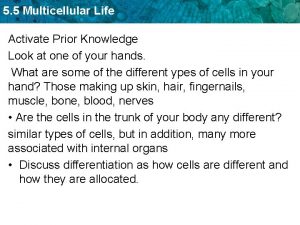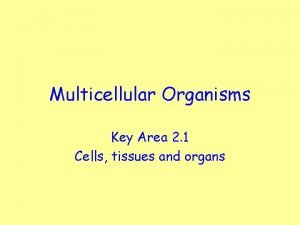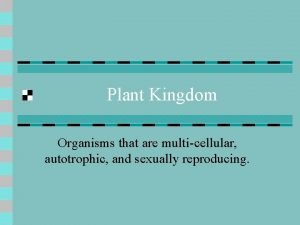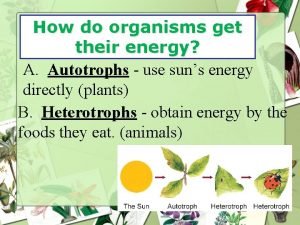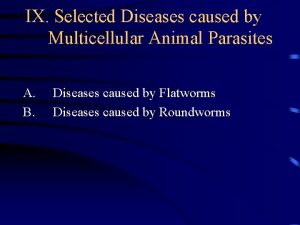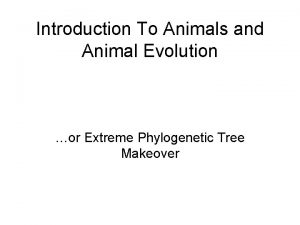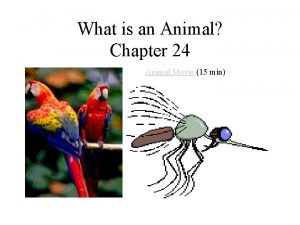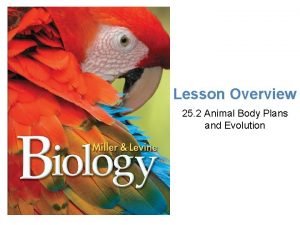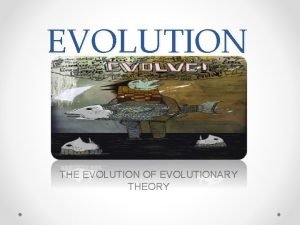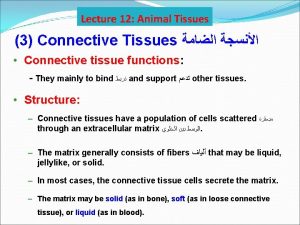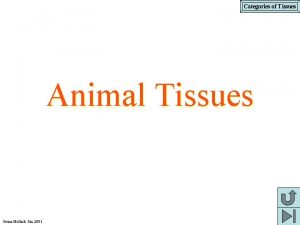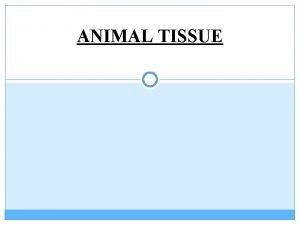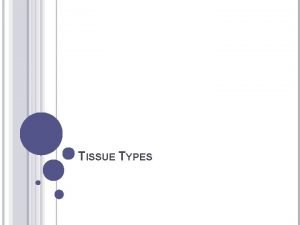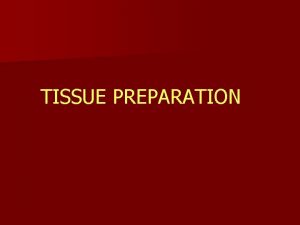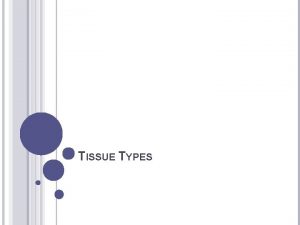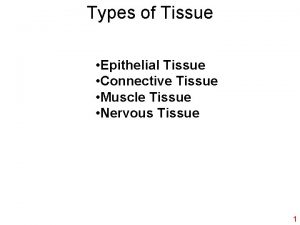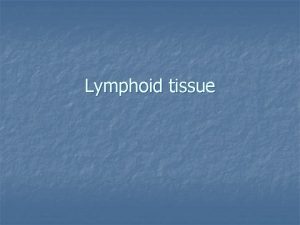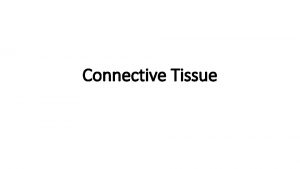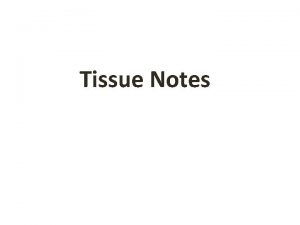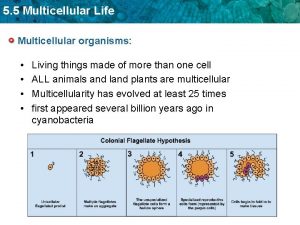Multicellular life Evolution of multicellular life Animal tissue





















- Slides: 21

Multicellular life Evolution of multicellular life Animal tissue types

Campbell Fig 1. 1

Campbell Fig 20. 2

Animal tissue types • What is a tissue? • A cooperative unit of many very similar cells that perform a specific function. • Examples – Epithelial – Connective – Muscle – Nervous

Epithelial tissue • Covers and lines the body and its parts • One surface free, the other bound to basement membrane • Tissues are named by – Shape of cells – Number of layers of cells

Epithelial tissue Campbell Fig 20. 4 • • • Simple = single layer Stratified = multiple layers Squamous = flat (tiles) Cuboidal = like dice Columnar = like bricks

Simple Squamous Simple Cuboidal In the kidney tubules Campbell Fig 20. 4 Lines the lungs

Stratified Squamous Epithelium Campbell Fig 20. 4 Lines the esophagus

Ciliated columnar epithelium Campbell Fig 20. 4 Lines the air ways in the respiratory system

Connective tissue • Binds other tissues an provides support matrices • Few cells in a nonliving matrix • Three fiber types – Collagen fibers – Elastic fibers – Reticular fibers • Fibroblasts - cells that produce connective tissue

Loose connective tissue (Areolar) Campbell Fig 20. 5 A Holds other tissue in place A “binding” material

Other Connective tissues Campbell Fig 20. 5 Loose Fibrous connective Adipose Cartilage Blood Bone

Tendons Dense connective tissue that Attaches muscle to bone Like Campbell Fig 30. 7

Bone Tissue • Osteocytes • Haversian canal • Lamelle (matrix) Campbell Fig 20. 5 D


Bone Development

Muscle tissue • Functions in movement • Bundles of long cells ( muscle fiber= muscle cell) • Skeletal muscle – Attached to bones by tendons, produces voluntary movement – Striated unbranched • Smooth muscle – Found in walls of digestive tract, produces involuntary movements – Unstriated, spindle shaped • Cardiac Muscle – Striated , branched, produces heartbeat

Muscle tissue Campbell 20. 6 Cardiac muscle Skeletal muscle Smooth muscle

Nervous Tissue • Responsible for coordinating body activties • Neurons are nerve cells • Motor neurons are nerves that activate muscles • Sensory neurons transmit information • Composed of cell body and dendrites • Supported by glial cells Campbell Fig 28. 3 A Modified

Nervous Tissue Campbell Fig 28. 2

Summary
 17-3 evolution of multicellular life
17-3 evolution of multicellular life Section 17-3 evolution of multicellular life answer key
Section 17-3 evolution of multicellular life answer key Multicellular tissue
Multicellular tissue A multicellular autotrophic organism with vascular tissue
A multicellular autotrophic organism with vascular tissue Plantae characteristics
Plantae characteristics A multicellular autotrophic organism with vascular tissue
A multicellular autotrophic organism with vascular tissue Which organism is an autotroph
Which organism is an autotroph Perforation plates
Perforation plates Name a multicellular organism
Name a multicellular organism Multicellular animal parasites
Multicellular animal parasites Animal evolution tree
Animal evolution tree Asymmetrical
Asymmetrical Lesson 3 animal body plans 2
Lesson 3 animal body plans 2 Animals evolution
Animals evolution Evolution of animal phyla
Evolution of animal phyla Function of animal tissue
Function of animal tissue Animal tissue
Animal tissue Animal tissue
Animal tissue Part of an animal
Part of an animal Venn diagram animal and plant cells
Venn diagram animal and plant cells Plant and animal cells venn diagram
Plant and animal cells venn diagram Animal rights versus animal welfare
Animal rights versus animal welfare

